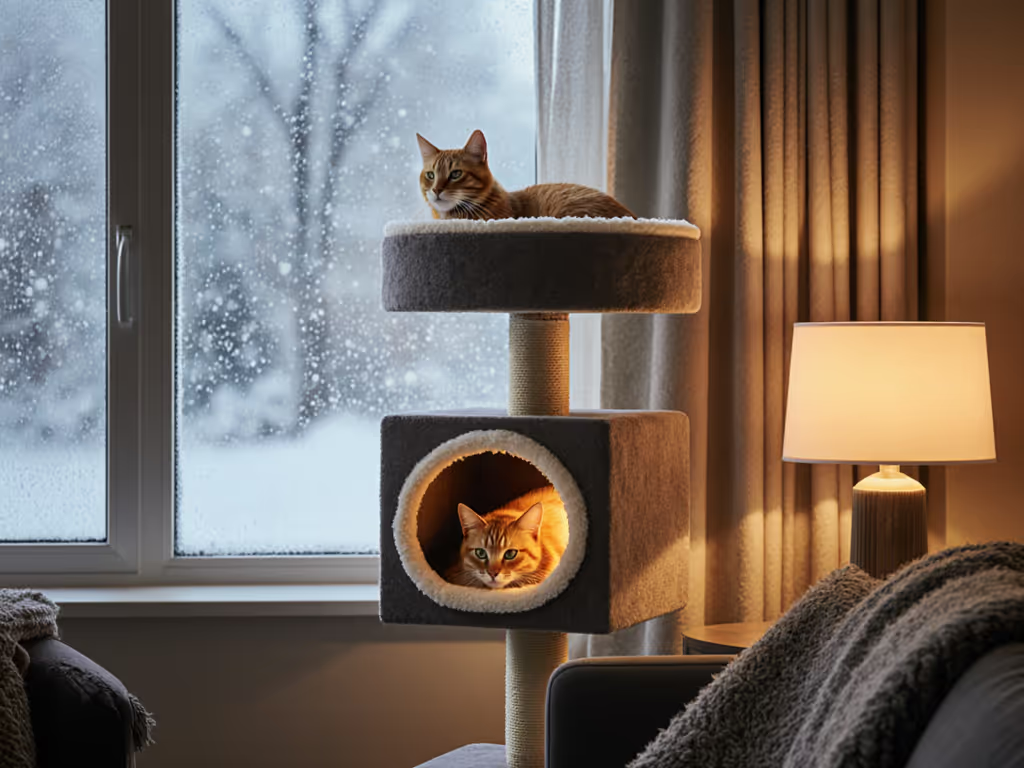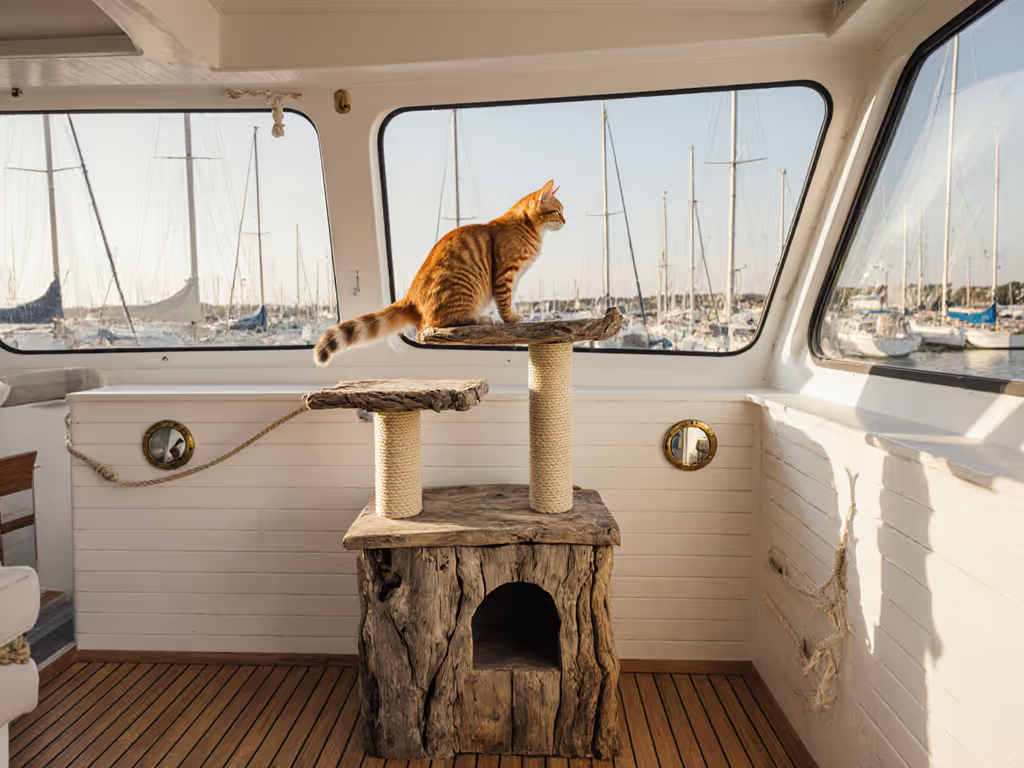
Cat-Friendly Living Room Makeover: Seamless Integrated Furniture
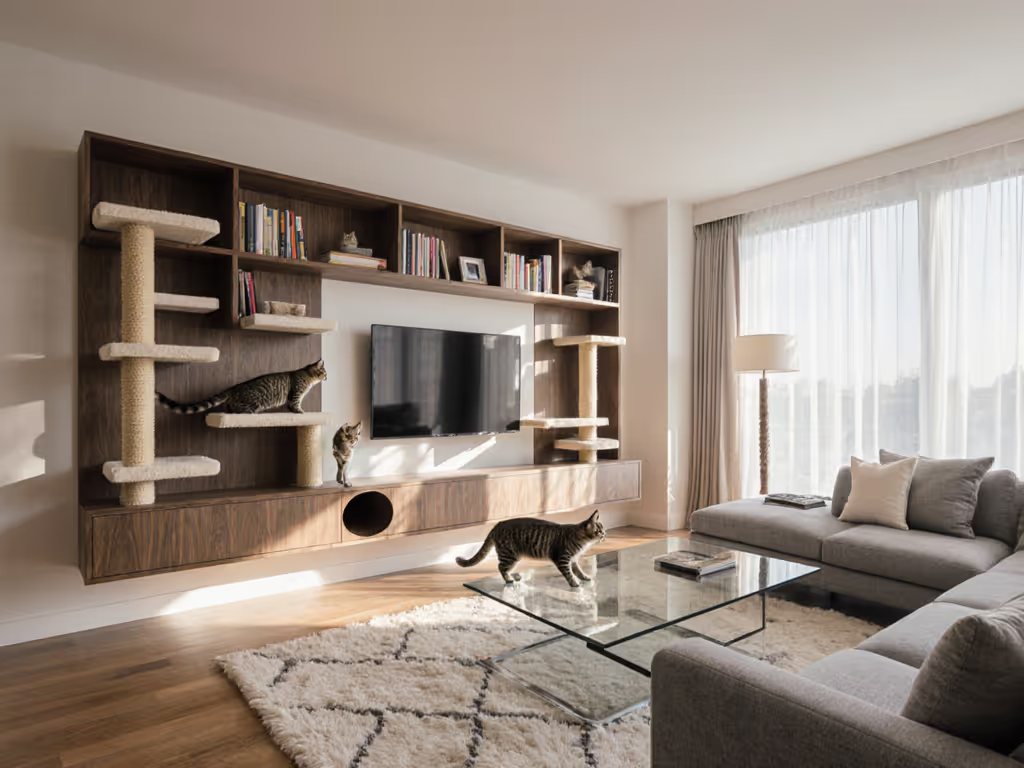
Creating a cat-friendly living room that feels welcoming for both humans and felines has become one of the most frequent requests I receive as an ergonomics specialist. The challenge is real: how do you satisfy your cat's instinctual need to climb, scratch, and perch while maintaining a sleek living space that reflects your personal style? The solution lies in thoughtfully designed integrated cat furniture that becomes part of your room's architecture rather than an afterthought. This isn't about adding another piece of furniture to your space, it's about reimagining your walls as functional zones that serve both you and your cat.
When my senior cat Kiri developed arthritis, our living room transformed from a place of relaxation to a landscape of obstacles. What was once simple navigation became tactical maneuvers that compromised both our comfort and the flow of our shared space. This experience taught me that true room design with cats must prioritize accessibility. It is not just about where cats can go, but how easily and safely they can get there.
Why Integrated Cat Furniture Matters More Than You Think
Why do cats need specialized living room furniture when they seem perfectly content on our sofas and shelves?
It's a common misconception that cats don't need dedicated furniture when they're already using our existing pieces. Cats have natural instincts to climb, scratch, and perch that serve important physical and psychological functions. An ergonomics-focused approach recognizes that when we redirect these instincts to purpose-built spaces, we create harmony rather than conflict in our homes.
With vertical territory often preferred by cats, living room cat shelves that blend with your decor provide the height they seek without turning your bookshelves into climbing structures. This reduces unwanted scratching on furniture and gives cats their own territory, critical for multi-cat households where resource competition can cause stress.
How can I integrate cat furniture without making my living room look cluttered?
The key is designing furniture that serves dual purposes, functional for your cat while enhancing your human aesthetic. Forget the bulky cat trees of the past. Modern decorative cat furniture can function as art installations, storage solutions, or even bookshelves that happen to accommodate your feline's needs. For a deeper dive into balancing style and function, explore modern aesthetic cat furniture that blends with decor.
Soothing the visual impact while supporting feline movement creates spaces where both species feel equally at home.
Consider installing floating shelves at varying heights that double as display spaces for your own decor items. Or incorporate scratching posts that match your wood finishes and function as stylish corner accents. The most successful integrations are those where guests might not initially realize certain elements are specifically for cats.
What does "ergonomic" really mean when designing cat furniture?
Feline ergonomics focuses on designing spaces that accommodate natural movement patterns while minimizing stress on joints and muscles, particularly important for senior cats. It means understanding that cats don't just climb; they need gentle transitions, secure footholds, and resting zones at strategic intervals.
A truly ergonomic cat furniture layout considers:
- Step height consistency (no sudden large jumps)
- Traction surfaces at every transition point
- Resting zones at regular intervals
- Warmth accessibility near heat sources
- Quiet materials that don't startle sensitive cats
This realistic approach recognizes that not all cats are athletes, and even young cats benefit from thoughtful design that prevents strain over time. Comfort is design: gentle grades, predictable paths, minimal friction.
How do I design a cat-friendly layout that works for multiple cats with different needs?
When accommodating multiple cats, particularly when mixing ages or abilities, your living room should offer varied pathways and destinations. A kitten might effortlessly leap from floor to ceiling, while your senior cat needs gradual, accessible routes.
Create a circuit of platforms with multiple access points at different heights. Position rest areas near heat sources for older cats while providing higher vantage points for more active felines. The goal is to avoid bottlenecks where cats might feel trapped or unable to retreat, key for reducing tension in multi-cat homes.
Fewer barriers, more confidence, that's the mantra that should guide your layout decisions. When each cat can navigate the space according to their ability without confrontation, you'll see fewer territorial behaviors and more relaxed cohabitation.
Evaluating Top Integrated Cat Furniture Solutions
After reviewing dozens of products, I've found that truly successful integrated cat furniture balances aesthetics, safety, and feline functionality. Let's examine one product that exemplifies these principles.
Catastrophic Creations Cat Scratching Post - 4-Tier
This isn't your grandfather's scratching post. The Catastrophic Creations 4-Tier Cat Scratching Post represents what happens when feline behavior experts team up with designers who understand home aesthetics.
The modular design allows for customization in both height and configuration, and they can be mounted vertically as a traditional post or arranged horizontally to create a climbing pathway along your wall. The use of sustainable bamboo provides stability (weight-tested up to 85 lbs) while maintaining a modern, clean look that integrates seamlessly with contemporary decor.
What makes this product particularly evidence-aware from an ergonomics perspective:
- The 11-inch depth provides ample space for cats to stretch fully while scratching
- Natural bamboo and sisal materials create quiet, non-reflective surfaces that don't startle sensitive cats
- Four-tier segments allow for gradual height progression rather than requiring risky jumps
- The minimalist design doesn't overwhelm smaller living spaces
I was particularly impressed with how the sisal rope is woven, tight enough to provide excellent scratching resistance but with sufficient give to prevent claw snags, a common issue with cheaper posts. The mounting hardware is substantial enough to provide real security without requiring excessive wall modification.
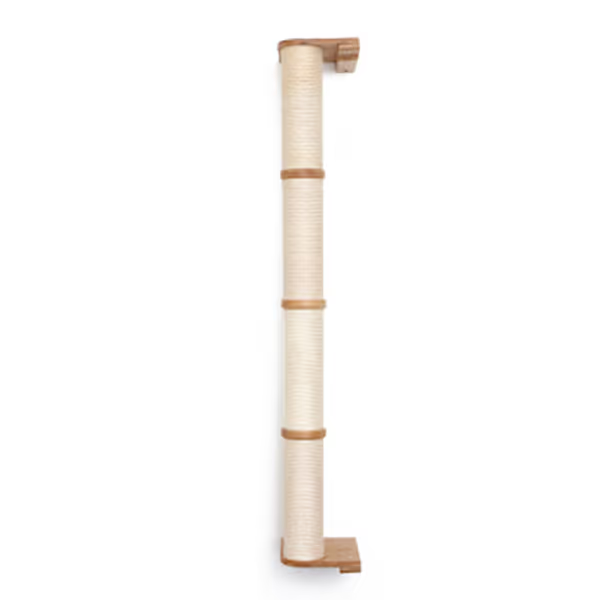
Catastrophic Creations 4-Tier Cat Wall Scratcher
Real-World Performance: What Owners Report
Based on behavioral observations and owner feedback I've collected, cats respond exceptionally well to the vertical progression offered by this system. Cats who previously ignored floor-based scratchers are drawn to the wall-mounted placement, especially when positioned near their favorite lounging areas.
Owners with senior cats report particular success with this system, noting that the consistent spacing between tiers allows arthritic cats to climb in manageable segments rather than attempting single large jumps. The stable construction eliminates the wobbling that often deters cats from using less secure scratchers.
One client shared that after installing this system, their cat's inappropriate scratching on their sofa decreased by more than 80% within three weeks. As she put it, "It was like providing a solution that finally matched my cat's instincts instead of fighting against them."
Remove the guesswork from your furniture selection with a system that accommodates your cat's needs while elevating your space (literally and aesthetically).
Creating Your Seamless Cat-Friendly Living Room
Strategic Placement Principles
When designing your cat furniture layout, consider these precise placement strategies:
Sight Lines and Territory
Cats feel secure when they can observe their domain from elevated positions. Place perches near windows for bird-watching opportunities but also create high points opposite room entrances so cats can monitor who enters their space. The ideal perch height is approximately 5 to 6 feet off the ground, high enough for security but low enough for safe descending.
Heat Mapping
Cats gravitate toward warm spots, particularly senior cats with circulation issues. Position resting platforms near natural heat sources (south-facing windows in cooler months) but ensure shaded options are available in warmer seasons. Consider adding heated pads to strategic platforms for year-round comfort.
Traction Considerations
Watch where your cats naturally move through your space, these become your "high-traffic" pathways for furniture placement. Ensure every transition point has textured traction. I've found that adding carpet remnants to the edges of platforms (as mentioned in one creator's experience) dramatically increases confidence during movement, reducing slips and near-misses.
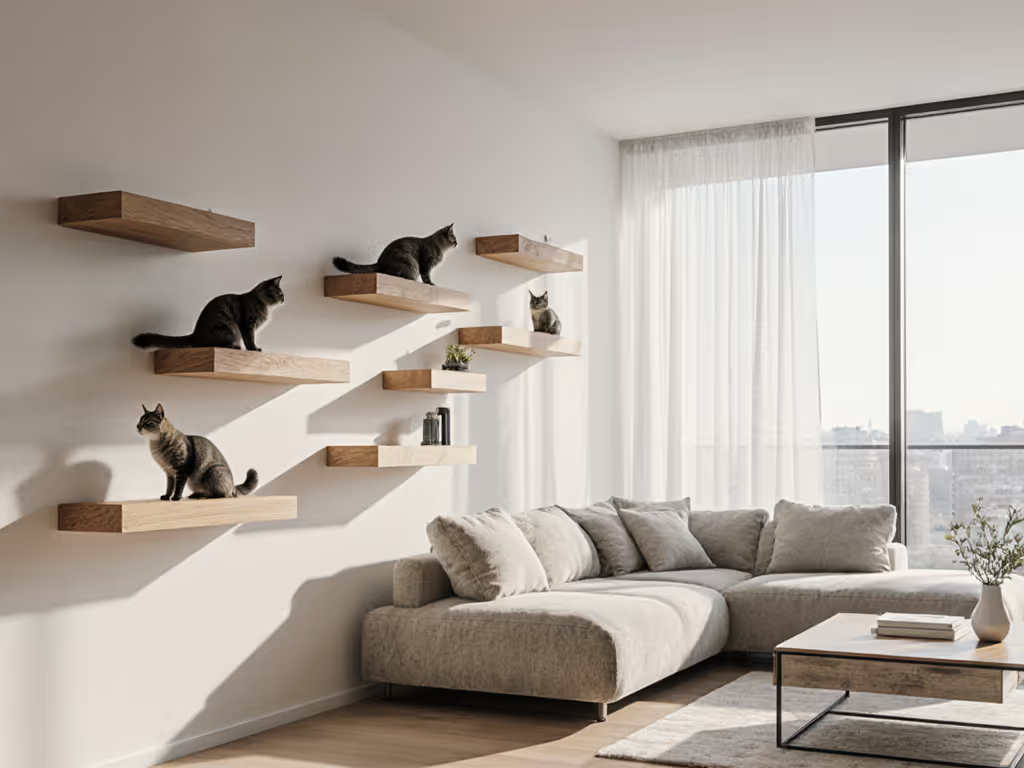
Material Matters: What Works for Both Cats and Humans
The best materials for integrated cat furniture share certain characteristics:
- Non-reflective surfaces that don't startle sensitive cats
- Textured traction that provides secure footing
- Quiet construction that doesn't create alarming noises during use
- Easy maintenance for hair and occasional accidents
- Aesthetic versatility that complements your existing decor
Bamboo appears frequently in high-quality integrated furniture because it satisfies these requirements. It's strong enough to support multiple cats, provides natural traction with its slight texture, and has a modern aesthetic that works with various design styles. Sisal remains the gold standard for scratching surfaces, it's durable, provides appropriate resistance for claw maintenance, and looks intentional rather than makeshift.
Final Thoughts: Creating Harmony in Shared Spaces
Designing a truly cat-friendly living room isn't about creating separate spaces for humans and cats, it is about designing a single space that functions beautifully for both species. When your integrated cat furniture becomes an intentional part of your home's architecture rather than an added-on afterthought, everyone benefits.
The most successful transformations I've witnessed follow these principles:
- Furniture serves dual purposes (human and cat)
- Pathways accommodate different mobility levels
- Materials complement rather than clash with existing decor
- Placement responds to natural feline behavior patterns
- Safety is built in, not an afterthought
Final Verdict
After years of studying feline movement patterns and working with clients to optimize their shared living spaces, I can confidently say that integrated cat furniture represents the future of thoughtful home design for cat owners. It addresses the practical challenges of living with cats while elevating the entire space aesthetically.
The Catastrophic Creations system exemplifies what's possible when designers approach cat furniture with equal attention to feline ergonomics and human aesthetics. While not the cheapest solution on the market, its durability, versatility, and seamless integration make it an investment that pays dividends in both feline wellbeing and human enjoyment of shared space.
Fewer barriers, more confidence, that's not just a phrase, but a design philosophy that transforms how cats experience our homes. When you create spaces that honor your cat's natural instincts while maintaining your personal style, everyone wins: your cat gets appropriate outlets for their behaviors, your furniture stays intact, and your living space remains a place of shared comfort rather than compromise. That's the true measure of success in a cat-friendly living room.

